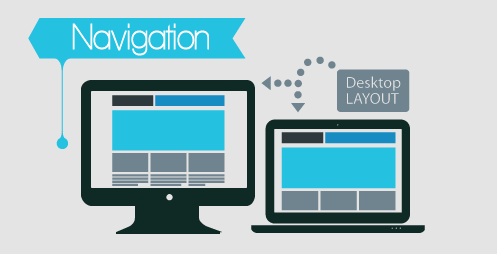In business, trust is the currency that fuels growth and success. It forms the foundation upon which meaningful connections are built. This is especially true in the digital space, where interactions are often fleeting and competition is becoming fiercer. However, with 200 million active websites globally vying for the same customer’s attention, standing out amidst the digital noise isn’t an easy feat. While the sheer volume of online presence can be overwhelming, it presents a vast opportunity for your business. The key is to establish your brand as credible and authoritative, thereby gaining the trust of your target audience. Creating engaging websites is essential to achieving this goal.
Table of Contents
ToggleStrategies for Creating Engaging Websites

To conquer this challenge, prioritize your web design to reflect professionalism and confidence. Join me as we explore key strategies for designing reliable, trust-inspiring websites.
1. Establish Expertise Through Quality Content
You may wonder why content is at the top of the list here. That’s because consumers are motivated to go online when they’re seeking information, solutions, or answers to their pain points. Whether researching a product, learning a new skill, or troubleshooting a problem, content acts as their guiding light.
Now, here’s the thing: visitors are skeptical of websites that don’t offer valuable content. They’ve become discerning about where they invest their time and attention online. They could judge your brand’s credibility based on the quality and relevance of its content. And that’s a fact you can’t afford to ignore.
Here are some concrete examples of how to establish expertise through high-quality website content:
- Publish in-depth tutorials: Create a ‘How To’ section and provide step-by-step walkthroughs on relevant topics. For example, an electronics retailer could post guides on setting up smart home devices or building a gaming PC. The more niche and detailed your advice, the more authoritative you appear.
- Analyze market research: Curate and analyze industry studies that offer original perspectives. If you’re a financial service site, you could provide breakdowns of emerging investment trends. This shows you’re studying parallel research closely enough to extract key insights.
- Feature case studies: Develop original case studies showing how you solved problems for real clients. These are powerful tools for showcasing your expertise, demonstrating the tangible results you’ve achieved, and building credibility with potential customers.
- Share big picture overviews: Compose overview articles drawing connections between popular subjects. Let’s say a healthcare provider might post an explainer examining how nutrition, stress levels, and sleep patterns influence immunity holistically. This demonstrates big-picture thinking.
Establishing your knowledge authority through well-researched content is a big factor in earning the trust and respect of your audience. This, in return, fosters deeper connections and cultivates a loyal following.
If you’re not sure where to start, you can get expert advice from Blennd or other digital marketing agencies specializing in content strategy and creation. Just be sure to assess their reputation and quality of work.
2. Optimize Site Navigation

Few things are more annoying than wasting time battling complicated websites. From hidden menus to broken links, navigation challenges overwhelm users. This confusion drives away potential customers, leading to site abandonment and a loss of trust in your brand.
You can combat this issue by organizing your pages intuitively with:
- A simple sitemap laying out key sections
- Descriptive main and submenu labels
- Linked headers and footers on all pages
- Prominent calls-to-action for critical conversion paths
- Convenient search bar for quick topic lookups
Every link, button, and heading should bring visitors closer to their goals. Never leave them clicking through irrelevant content or backtracking excessively. Smooth navigation gives users control over their experience, making them more receptive to your services.
Also Read: What is an Online Community?A Roadmap to Establishing Your Own in 5 Steps
3. Prioritize Responsive Design- Creating engaging websites

Did you know that nearly 60% of website traffic came from mobile devices in the last quarter of 2023? That number is expected to continue rising as mobile usage becomes increasingly prevalent in everyone’s daily lives.
Consequently, no one enjoys clunky pinch-zooming and squinting at tiny text. These mobile friction points degrade the user experience, signaling technological incompetence. That’s why responsive web design is important, adapting your layout fluidly across devices.
- Use relative width sizing for seamless scaling
- Test site functionality on all screen sizes
- Ensure buttons and links work for fat fingers
- Check page load speeds on 3G networks
When your website accommodates on-the-go users, you earn visitor trust through smooth user journeys. Every effort made towards enhancing the mobile experience is an investment in customer satisfaction and, ultimately, business success.
Also Read: Why & How to Track Google Algorithm Updates To Stay SEO Optimized?
4. Showcase Validating Credentials
In a sea of unknown sites, visitors rely heavily on validity indicators to evaluate trustworthiness. Credentials like certifications, testimonials, client logos, and team photos act as crucial proof points that reinforce expertise.
Fortunately, visually showcasing achievements or affiliations that your audience finds impressive is straightforward. For example:
- Display badge seals confirming licenses, ISO certifications, ratings, and non-profit partnerships. The more pertinent to your industry, the better.
- Embed positive client testimonials describing specific ways you delivered results. Include details like ‘increased sales 20% in just a few months” rather than generic praise.
- Feature client logos or partners if possible. Name-dropping builds credibility through associations.
- Introduce your team through professional headshots and bios emphasizing relevant qualifications. Let visitors put faces to your services.
- Share images of modern, capability-reflecting work premises. A retail chain could showcase bustling storefronts and warehousing scale, for instance.
Devote your homepage and ‘About Us’ page to proudly display your merits. The more third parties validate capabilities, the more believable your promises become across touchpoints. Their influence on earning customer faith cannot be overstated. Gradually, new visitors transform into customers as external affirmation sinks in. Their influence on earning customer faith cannot be overstated.
5. Establish Brand Consistency- Creating engaging websites
Professional brands project aligned identities across every customer touchpoint. This coherence makes capabilities clear and breeds familiarity. For your website specifically, ensure to extend its layout, design, voice, and tone through:
- Cohesive color schemes and fonts
- Uniform logo placement and sizing
- On-brand social media profiles
- Matching email templates and newsletters
The goal is for customers to instantly recognize your visual language and messaging framework as the same brand, connecting experiences fluidly.
This organization-wide consistency then enables greater focus on your solutions rather than decoding mixed signals. Visitors feel secure engaging across channels, knowing what to expect at each step.
Creating engaging websites-Wrapping Up
Optimizing credibility takes time but rewards you with lasting customer faith. As your expertise entrenches and your community grows, keep improving site content and features to maintain relevance and engagement. Soon, visitors will evolve into vocal advocates, validating your hard-earned trustworthiness.
Interesting Reads:
Importance Of Choosing A Professional Web Design Compan







